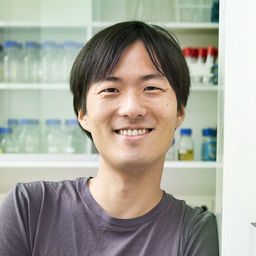| Dr Hyun Youk (Assistant Professor of physics and quantitative biology TU Delft) |
| Thu 05 Dec 2019, 12:00 - 13:00 |
| C.H Waddington Building, Seminar room 1.08, King's Building's |
If you have a question about this talk, please contact: Julie Fyffe (jfyffe)

Understanding how living cells and organisms behave at the boundary of life and death may help us to rigorously define what being “alive” and being “dead” each mean. Studying life-death boundary (i.e., life pushed to its limits) is inherently challenging because one must first discover a “knob” that one can tune to have cells or organisms transition between life and death. One would then need to finely tune this knob to place the living system right at the boundary, which would require having a degree of quantification and control that might be difficult to achieve. In this talk, I will present two studies - one on murine Embryonic Stem (ES) cells and another on budding yeast - that explore this topic with a combination of experiments and mathematical models. First, I will descirbe our discovery of quorum sensing by murine ES cells that cause the cells to either collectively proliferate or die - leading to population proliferation or extinction - solely based on their initial population-density. Crucially, we found that this quorum sensing is absent while ES cells are pluripotent but become active at the moment that they are triggered to differentiate towards any cell-fate. We found that the quorum sensing occurs over a macroscopic (millimeter) lengthscale and describe the molecules that the differentiating cells secrete and sense to achieve this quorum sensing. In the second half of my talk, I will show that budding yeasts, despite being single-celled organisms, collectively combat rising temperatures. We found that when temperature increases above a certain value, budding yeasts secrete and extracellularly accumulate an antioxidant (glutathione) that reduce heat-induced damagaes. In this way, yeasts help each other and their future generations of cells replicate and avoid population extinctions at high temperatures. We measured a phase diagram which summaries, as a function of temperature, when yeasts can replicate and when they cannot. A consequence of our work is that to determine whether a temperature is habitable or uninhabitable for yeast, one must know not just the temperature but also the starting population-density. A mathematical model reproduces the phase diagram and shows that at certain combinations of temperature and population density, a population can, on average, have an infinite lifetime (never go extinct) due to the cells cooperating - a manifestationg of “critical slowing down”. We experimentally verify this. These two studies, despite invovling different organisms in very different settings, exhibit common features. Together, these studies suggest that it may be worthwhile to search for common cellular dynamics that underlie living systems at the boundary of being alive and being dead.


